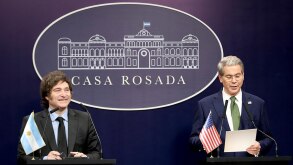Grant Thornton UK describes the common themes raised during the road shows and manuals and summarise the benefits of the regime for companies who exploit patents in their business.
What is the patent box?
The patent box allows companies to elect into a regime which gives an effective 10% rate of corporation tax on profits attributable to qualifying patents. The benefit of the regime will be phased in from April 1 2013 with the full reduced rate applying from April 1 2017. Where an election into the regime is made, the reduced rate of tax is given effect by incorporating an additional deduction in the corporation tax computation.
How is the patent box profit calculated?
Patent box profits are determined by carving out portions of total gross company income to arrive at income qualifying for the regime.
The proportion of a company's gross income, which is derived from patented intellectual property (IP), is then used to apportion a company's adjusted trading profits. These apportioned profits are then further reduced by applying a cost plus 10% mark-up to specific routine expenses.
This aims to reflect the profit a business may be expected to make if it did not have access to unique IP and other intangibles, but note the mark-up of 10% is only applicable to the patent box calculation, and not wider transfer pricing. Following the deduction of the routine return, the company is left with the patent box qualifying residual profit (QRP).
As an alternative way to calculate QRP (instead of apportioning profits by reference to the percentage of relevant IP income), a streaming election could be made, whereby costs are apportioned between eligible and ineligible income and once again, a 10% mark-up on costs is applied. This approach could be advantageous for some businesses; for example those where the company's non IP income generates a lower profit than its IP income. Streaming may also be mandatory in some circumstances; for example where the UK company is a licensing conduit company.
QRP represents profits which relate to the exploitation of qualifying IP rights but still includes profits deriving from other intangibles such as brand or marketing assets. At this stage either a small claims election may be made if the company is eligible or a notional marketing royalty (NMR) should be deducted from the QRP to remove the brand element of a company's profits.
What is left is the relevant IP profit, which is used to calculate the deduction from trading profits to give the effective 10% rate of tax (as outlined above).
A small claims election can only be made by companies considered to be small for patent box purposes, for which certain conditions should be met. Note, the conditions are different to the limits which can exempt small companies from the UK transfer pricing rules.
The NMR should be considered under transfer pricing principles, and the comparable uncontrolled price and profit split methods are mentioned in HMRC's guidance.
HMRC states that the OECD guidelines must be followed and the circumstances of the taxpayer and the need to consider “options realistically available” should be taken into account. However, relative bargaining power is not required to be considered. HMRC views the NMR to represent the maximum royalty the company would be willing to pay.
Any enquires into the NMR will follow the normal transfer pricing governance process and HMRC has indicated that it expects in many cases that once agreed, the same NMR percentage could be used for a few years.
At the roadshows, a pragmatic approach was suggested for businesses where marketing assets make only a small contribution to overall profit and this is now reflected in HMRC's manuals.
The guidance indicated that where companies can clearly demonstrate that sales are made on a business-to-business level (or in regulated markets) and those sales are generated principally because of the technical specifications of the product being sold, then the NMR may be deemed to be nil.
The focus of HMRC's attention in relation to marketing therefore seems likely to be on the larger companies and those with established brands, especially where sales are made to household consumers.
Watch this space, however, as the treatment of patent box profits evolves. Whether HMRC will accept NMRs that are nil in practice will only become apparent well after the regime comes into effect this April.
By principal correspondents for TPWeek in the UK, Wendy Nicholls, David Willott and Sameer Dewji, of Grant Thornton.









